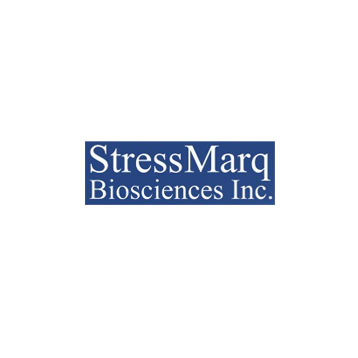| Catalogue number: |
SMC-129D |
| Reactivities: |
Human, Mouse, Rat, Bovine, Canine, Chicken/Bird, Hamster, Porcine, Rabbit, Sheep |
| Hosts: |
Mouse |
| Applications: |
Immunocytochemistry, Immunohistochemistry, Immunoprecipitation, Western Blot |
| Size: |
100ug |
| Clone: |
KR-10 |
| Accession: |
NP_598711.1 |
| Gene: |
68137 |
| Swiss prot: |
Q99JH8 |
| Dilutions: |
1:1000 dilution was sufficient for detection by colorimetric analysis |
| Form: |
Mouse Ascites fluid |
| Storage buffer: |
PBS pH7.2, 50% glycerol |
| Concentration: |
1mg/mL |
| Isotype: |
IgG1 |
| Shipping temp: |
Blue Ice or 4 |
| Storage temp: |
-20 |
| Research area: |
Chaperones, Organelle Markers |
| Certificate of analysis: |
1ug/ml was sufficient for detection of KDEL receptor in 20ug monkey Vero cell lysate by colorimetric immunoblot analysis using Goat Anti-Mouse IgG:AP as the secondary. |
| Scientific background: |
The endoplasmic reticulum is part of a protein sorting pathway, or in essence, the transportation system of the eukaryotic cell. The majority of endoplasmic reticulum resident proteins are retained in the endoplasmic reticulum through a retention motif. T |
| Alternative names: |
ERD2, ERD2.1, ERD21, HDEL, KDEL, KDEL R1, KDELR1, PM23 |
| References: |
1. Whiteman P., and Handford P.A. (2003) Hum Mol Genet
2. Forthoffer N., et al. (2002) 12(7): 727-737.
34(3): 209-219.
J Bioenerg Biomemb
3. Aoe T., et al. (1997) EMBO J. 16: 7305-7316.
4. Tang B.L., Wong S.H, Qi X.L. Low S.H., and Hong
W. (1993) J. Cell |

 Products
Products  KDEL Receptor
KDEL Receptor
